Rare Rides Icons: The History of Kia's Larger and Full-size Sedans (Part XII)

In our last installment of Kia’s large sedan history, we took a look at the second generation Cadenza. With its second salvo at the likes of the Toyota Avalon and the Buick Lacrosse, Kia planned to capture the near-luxury sedan customer who cared about value. Unfortunately, the Cadenza didn’t excel at anything in particular, and failed to stand out against more established competition.
A similar story played out a few years before when Kia introduced the first full-size rear-drive luxury car it ever designed in-house. Called the K9 (Quoris or K900 elsewhere), the large sedan shared a platform with the new rear-drive Hyundai Equus. Both sedans were the flagship offerings at their respective brands.
The Equus was flashy and almost American-inspired, while the K9 was conservative and understated. But it turned out a large and anonymous looking luxury car was not to the taste of most customers. Even in its home market, buyers vastly preferred the Equus and its large winged hood ornament. What was Kia to do?
The first generation K9 was offered in the South Korean market for the 2013 to 2018 model years, but was only offered in North America from 2015 to 2017. Select international markets also received the K9, though its sales story was much the same no matter where it landed. But that didn’t put Kia off, and in 2019 the company was ready with a second generation K9. It was bigger, bolder, more luxurious, and much more impressive than before.
As before, the new K9 borrowed its platform from an extant Hyundai. Hyundai changed its branding methodology between the first and second K9s: It launched the separate Genesis luxury brand, and then shifted the Equus from Hyundai to Genesis. The shift happened in 2015 when Genesis debuted the new EQ900 in South Korea (G90 elsewhere). The EQ(uus) part of the model’s name lasted until 2018 when the sedan was facelifted. At that point all markets received the largest Genesis branded as G90.
G90 used the rear-drive HI platform, which Kia relabeled to RJ for K9 purposes. Hyundai had a four-year head start with the EQ/G90 over Kia, as it needed time to debut the Genesis brand and convert the Equus faithful. Given its second-tier placement, Kia was forbidden from designing a flagship as large as the G90.
The K9’s new wheelbase was 122.2 inches, while the G90's was 124.4”. Overall length for the K9 was 201.6 inches, notably shorter than the G90’s 204.9-inch span. Both cars shared the same 75.4” width, and nearly the same overall height (58.7” at Kia, 58.9” on Genesis). However, like the previous Equus the G90 was offered in a limousine format that had a wheelbase of 135.8 inches. That sort of grandiose luxury was not permitted for the K9.
Engines were shared between the two cars, as Hyundai and Kia closed the gap and eliminated Kia-developed engines throughout the 2010s. Only one of four available engines were new for 2019: the 3.3-liter Lambda II turbocharged V6 with direct injection. The turbo engine produced impressive figures, like 365 horsepower and 376 lb-ft of torque. The base engine on the new K9 was the 3.3-liter Lambda II engine with direct injection, a carry over from the old model. It produced 250 horses and 256 lb-ft of torque, which doesn’t sound like enough for such a large car.
The largest V6 engine offered on the K9 was the 3.8-liter Lambda II, in naturally aspirated guise. With 311 horsepower and 293 lb-ft of torque, it trailed the smaller turbocharged engine notably. Top spec was again the 5.0-liter Tau V8 from Hyundai. With direct injection it made an impressive 419 horsepower and 383 lb-ft of torque.
All versions of K9 used the same eight-speed automatic transmission from the G90. And like its bigger sibling, the K9 was newly available with optional HTRAC all-wheel drive. The K9 did not have excellent performance with the base 3.3-liter: 62 miles per hour arrived in a lengthy 8 seconds if rear-drive, or 8.4 seconds in all-wheel drive format. The 4,700-pound sedan was impressive with the V8, and with all-wheel drive sprinted to 62 in just 5.7 seconds. Top speed on all models was 149 miles per hour.
As far as styling was concerned, the new K9 maintained its own identity, and did not share body panels with the G90. It also made a clean break with its former self, and with Kia as a whole. Penned once again by Peter Schreyer, the K9 looked much more upscale in its second iteration. Lower and wider in its stance, it reflected more of the expected proportions of a rear-drive sedan. The new K9 had a couple additional inches in wheelbase and overall length compared to the old model.
At the front, Kia’s Tiger Nose treatment was reduced in intensity: There were still upper and lower indentations in the middle of the grille, but that’s all that remained. Unlike the previous model, the new K9 did not have a front end dominated by Tiger Nose principles. The grille was of a large mesh design, and looked more upscale than the outgoing model’s vertical chrome slats.
Headlamps were no longer Optima-adjacent, but were instead S-Class adjacent. Large and filled with simple two-tier LED elements, the headlamps looked more suitable on a large sedan than on the old K9. The lower valance held a couple of faux vents on either side that flanked a dark grille opening below the bumper. Other than thin chrome strips across the valance and around the grille, the new K9’s front end was devoid of flashy ornamentation.
The hood had subtle power bulging, and flowed into a gently creased front fender. Along the side, the new K9 retained the same basic profile as the old model but carried it off in a more upscale Germanic fashion. Chrome trim around the windows was sort of like a 7 Series, and so was the lower chrome trim strip that ran from aft the front tire through the rear door.
That chrome strip continued after the rear tire, and wrapped around the shapely new rear of the K9. Styling stepped away from the generic Toyota-like appearance of the old model, and went for sharper edges and a more upright rear clip. Brake lamps were large, mostly square, and had a two-tier LED look to them. Comparisons could be made to Mercedes or Bentley rear treatments, but the K9 was different than either. Trapezoidal exhaust outlets on either side looked sporty and purposeful.
Inside, the K9 embraced the conservative side of modern luxury and technology, with swaths of leather upholstery that included contrasting piping, and plenty of burled wood. The dash had a large central screen and radio controls trimmed all in metal. It also had that most ancient of luxury features, an analog clock. Fit, finish, and materials inside all looked excellent, which matched the exterior’s very tight panel gaps.
The K9 was ready for production by 2018, and Kia chose to debut it in New York, again with adjusted K900 branding. Did it all go swimmingly? Not quite. We’ll pick up next time and talk about money, sales, and an emergency facelift.
[Images: Kia]
Become a TTAC insider. Get the latest news, features, TTAC takes, and everything else that gets to the truth about cars first by subscribing to our newsletter.

Interested in lots of cars and their various historical contexts. Started writing articles for TTAC in late 2016, when my first posts were QOTDs. From there I started a few new series like Rare Rides, Buy/Drive/Burn, Abandoned History, and most recently Rare Rides Icons. Operating from a home base in Cincinnati, Ohio, a relative auto journalist dead zone. Many of my articles are prompted by something I'll see on social media that sparks my interest and causes me to research. Finding articles and information from the early days of the internet and beyond that covers the little details lost to time: trim packages, color and wheel choices, interior fabrics. Beyond those, I'm fascinated by automotive industry experiments, both failures and successes. Lately I've taken an interest in AI, and generating "what if" type images for car models long dead. Reincarnating a modern Toyota Paseo, Lincoln Mark IX, or Isuzu Trooper through a text prompt is fun. Fun to post them on Twitter too, and watch people overreact. To that end, the social media I use most is Twitter, @CoreyLewis86. I also contribute pieces for Forbes Wheels and Forbes Home.
More by Corey Lewis
Latest Car Reviews
Read moreLatest Product Reviews
Read moreRecent Comments
- Jkross22 Tim Apple sniffing around to see if he can sucker someone else into under-RAM'ing devices to save $2/unit and force upgrade people.
- Jkross22 Not to rub salt in the wound, but why would you put your hq in some extraordinarily expensive real estate like Manhattan Beach? I know little of Fisker the person, but this reeks of ego and the desire for appearances.
- 3-On-The-Tree I’ve responded to several bike accidents where if the guy wasn’t wearing a helmet he would’ve been in a casket. Plus it saves your hearing.
- Wjtinfwb Nice cars and a find if you're into Radwood type iron. But a near 40 year old anything, even something as robust as a Legend is going to have failure points that would be prohibitively expensive to fix. Electronics, A/C, leaky old gaskets, creaking suspension bushing etc., not to mention the lack of safety gear and an interior that no doubt has "seen a lot". I applaud the manual transmission, but you could likely find something 30 years newer for not much more money to hone your heel and toe skills on before graduating to a more expensive ride.
- ScarecrowRepair Considering how over-priced Apple products are, I doubt a cheap Rivian is in the works.




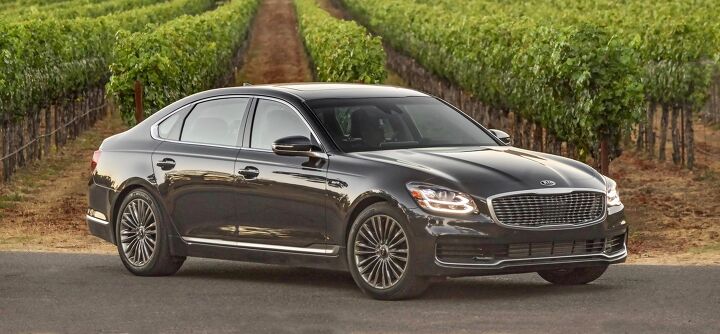
















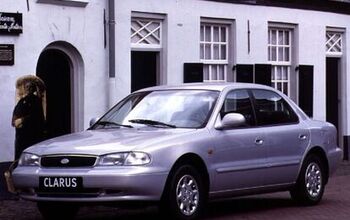
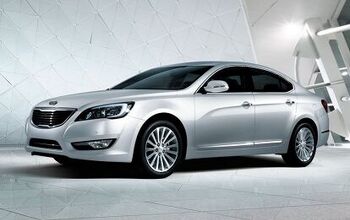
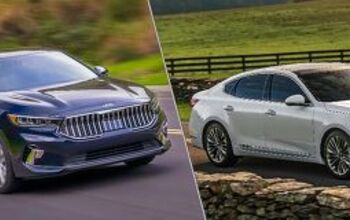
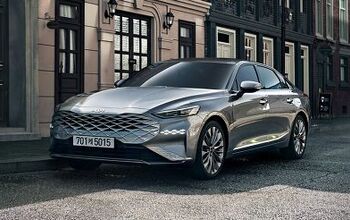











Comments
Join the conversation
With Honduhs you don't worry about puddles - you worry about them CONSUMING oil.
A 12 part plus series on KIA??? How much is that costing them?